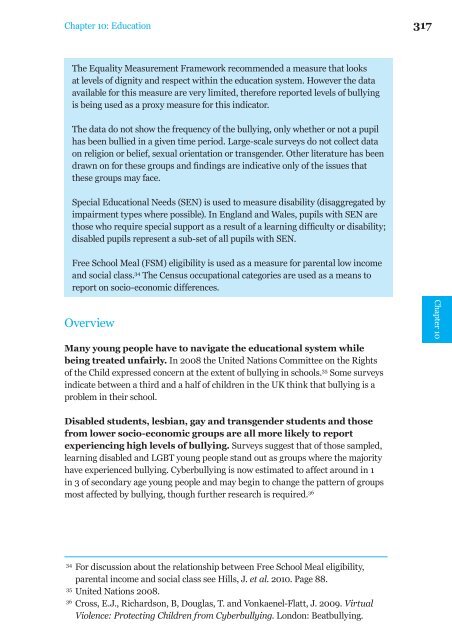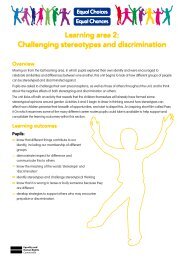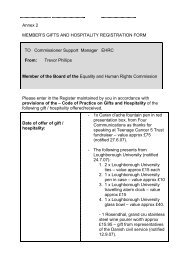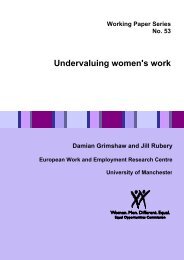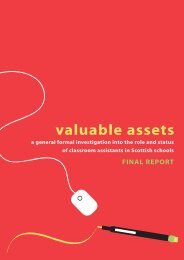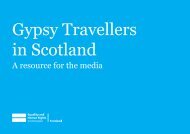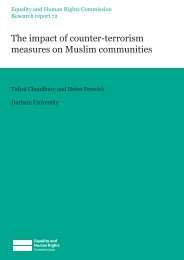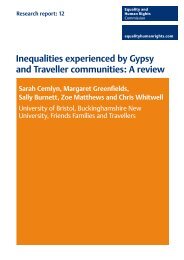Chapter 10: Education - Equality and Human Rights Commission
Chapter 10: Education - Equality and Human Rights Commission
Chapter 10: Education - Equality and Human Rights Commission
Create successful ePaper yourself
Turn your PDF publications into a flip-book with our unique Google optimized e-Paper software.
<strong>Chapter</strong> <strong>10</strong>: <strong>Education</strong> 317<br />
The <strong>Equality</strong> Measurement Framework recommended a measure that looks<br />
at levels of dignity <strong>and</strong> respect within the education system. However the data<br />
available for this measure are very limited, therefore reported levels of bullying<br />
is being used as a proxy measure for this indicator.<br />
The data do not show the frequency of the bullying, only whether or not a pupil<br />
has been bullied in a given time period. Large-scale surveys do not collect data<br />
on religion or belief, sexual orientation or transgender. Other literature has been<br />
drawn on for these groups <strong>and</strong> findings are indicative only of the issues that<br />
these groups may face.<br />
Special <strong>Education</strong>al Needs (SEN) is used to measure disability (disaggregated by<br />
impairment types where possible). In Engl<strong>and</strong> <strong>and</strong> Wales, pupils with SEN are<br />
those who require special support as a result of a learning difficulty or disability;<br />
disabled pupils represent a sub-set of all pupils with SEN.<br />
Free School Meal (FSM) eligibility is used as a measure for parental low income<br />
<strong>and</strong> social class. 34 The Census occupational categories are used as a means to<br />
report on socio-economic differences.<br />
Overview<br />
Many young people have to navigate the educational system while<br />
being treated unfairly. In 2008 the United Nations Committee on the <strong>Rights</strong><br />
of the Child expressed concern at the extent of bullying in schools. 35 Some surveys<br />
indicate between a third <strong>and</strong> a half of children in the UK think that bullying is a<br />
problem in their school.<br />
<strong>Chapter</strong> <strong>10</strong><br />
Disabled students, lesbian, gay <strong>and</strong> transgender students <strong>and</strong> those<br />
from lower socio-economic groups are all more likely to report<br />
experiencing high levels of bullying. Surveys suggest that of those sampled,<br />
learning disabled <strong>and</strong> LGBT young people st<strong>and</strong> out as groups where the majority<br />
have experienced bullying. Cyberbullying is now estimated to affect around in 1<br />
in 3 of secondary age young people <strong>and</strong> may begin to change the pattern of groups<br />
most affected by bullying, though further research is required. 36<br />
34<br />
For discussion about the relationship between Free School Meal eligibility,<br />
parental income <strong>and</strong> social class see Hills, J. et al. 20<strong>10</strong>. Page 88.<br />
35<br />
United Nations 2008.<br />
36<br />
Cross, E.J., Richardson, B, Douglas, T. <strong>and</strong> Vonkaenel-Flatt, J. 2009. Virtual<br />
Violence: Protecting Children from Cyberbullying. London: Beatbullying.


